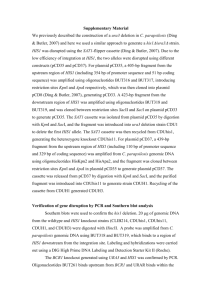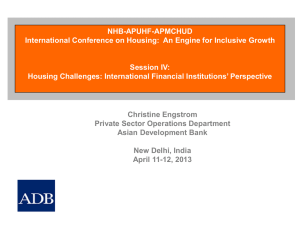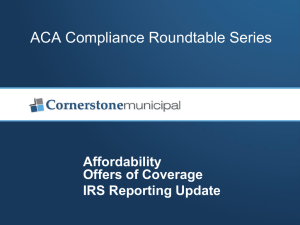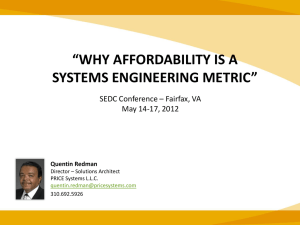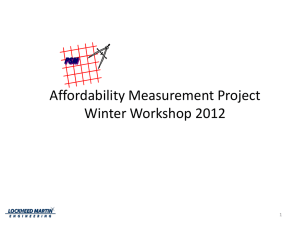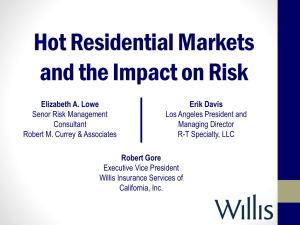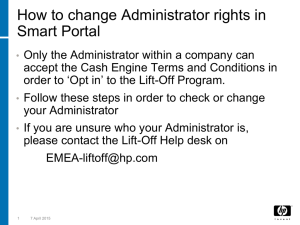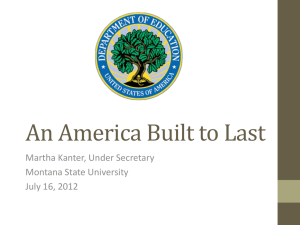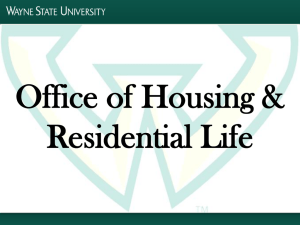Tax Incentives
advertisement
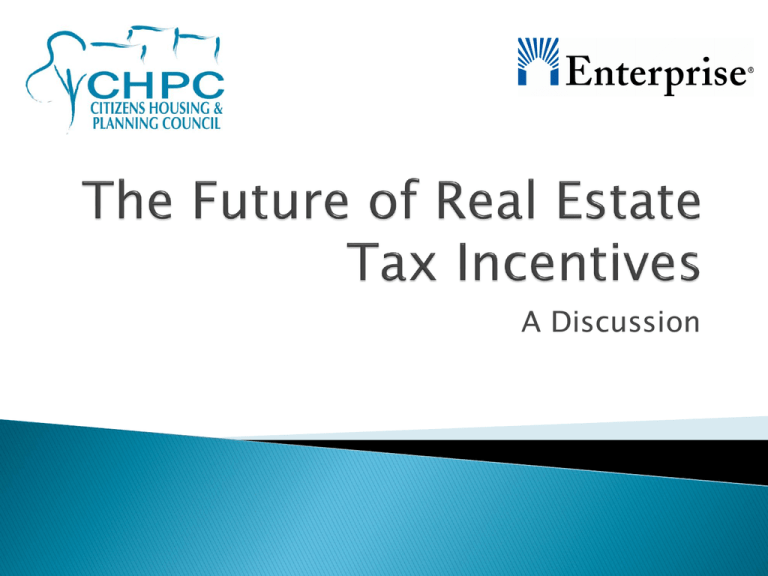
A Discussion Original Intent Encourage needed upgrades for existing housing Reduce operating costs for highly subsidized projects Stimulate needed residential construction and related economic activity Hold city expenditures to the minimum needed to reach these objectives 1950’s Encourage needed upgrades for existing housing 1960’s Reduce operating costs for highly subsidized projects 1970’s Stimulate needed residential construction and related economic activity 1990’s Reduce operating costs for highly subsidized LIHTC projects Many places have PILOT programs DC, Philadelphia, Seattle, Cincinnati have as of right programs ◦ ◦ ◦ ◦ May cap total amount awardable in a year May require affordability Usually 8-10 year abatement period Some programs are highly targeted (e.g. SRO program in DC) Usually require a threshold investment May require affordability component ◦ Seattle – 20% of units “affordable” The Context Mortgage Recording Real Property $414 Transfer Other, $788 $3,069 Commercial Rent $603 Sales $5,528 Real Property $16,860 UBT $1,675 Banking Corporation $1,336 General Corporation $2,300 Personal Income $7,608 Source: Fiscal Year 2012 Adopted Budget Commercial Industrial $755.3 Individual Assistance $674.3 Other $18.8 Other Residential All Residential $1,527 $252.6 420-c $57.0 J-51 $256.7 421-a $911.6 Article 11 $49.1 Source: Annual Report on Tax Expenditures Fiscal Year 2011 420-c 12,000 Article 11 37,164 421-a 583,776 - 200,000 400,000 Units with Tax Exemptions $57 Article 11 $49 421-a 124,267 J-51 420-c 600,000 800,000 $912 J-51 $257 $0 $200 $400 $600 $800 $1,000 Annual Dollar Costs of Exemptions (in millions) Source: Annual Report on Tax Expenditures Fiscal Year 2011 and DOF Data on J-51 In FY 2011 $911.6 million in Tax Revenue was Foregone in 421-a What Year Did Exemption Starts? 1988-2000 ‘02 ‘03 ‘04 ‘05 2006 2007 2008 2009 2010 2011 ‘01 $0 $200 $400 $600 421-a Tax Expenditure, in Millions $800 $1,000 $250 $200 $150 $100 $50 $0 Source: RGB 2011 Income and Expense Study Talked to 28 industry and government leaders about, ◦ Objectives and effectiveness of programs ◦ Administration of programs ◦ Practical issues Many old tax incentive programs designed to take advantage of different state and federal programs ◦ ◦ ◦ ◦ Article Article Article Article 2 for Mitchell Lama 5 for federal programs 4 16/UDAAP These are not growing and slowly fading out Is this still a valid objective? ◦ New variations Energy efficiency Preserving at risk buildings Preserving affordability J-51 ◦ Is it too complicated? Processing takes too long Approval amount subject to too much variation ◦ Does the Roberts decision make this program more “efficient” going forward J-51 ◦ Is the term long enough? Is this a valid objective of public policy? Does the incentive generate construction that would not otherwise occur? 421-a ◦ Panelists said current tax rates are a significant barrier to new construction. ◦ Could a reformed tax policy for new rental housing achieve the same objective more efficiently? 421-a ◦ Does the economic value of the incentive go to the seller of the land or to the project? ◦ How can we insure it goes to the project? Should the 421-a link to rent stabilization continue? ◦ Does the Roberts decision make these programs more “efficient” going forward? In general, do the tax incentives match the term of affordability restrictions of the projects? Article 11/ 420c Generally seems to be working Possible changes ◦ Should one program go the Council and the other be as of right? ◦ Could Article 11 extensions be approved without Council approval? Are there new priorities that should be brought into the tax incentive process? ◦ Over Mortgaged buildings ◦ TPT projects ◦ Preserving former Section 8 and Mitchell Lama projects ◦ Energy efficiency ◦ Preserving affordability
